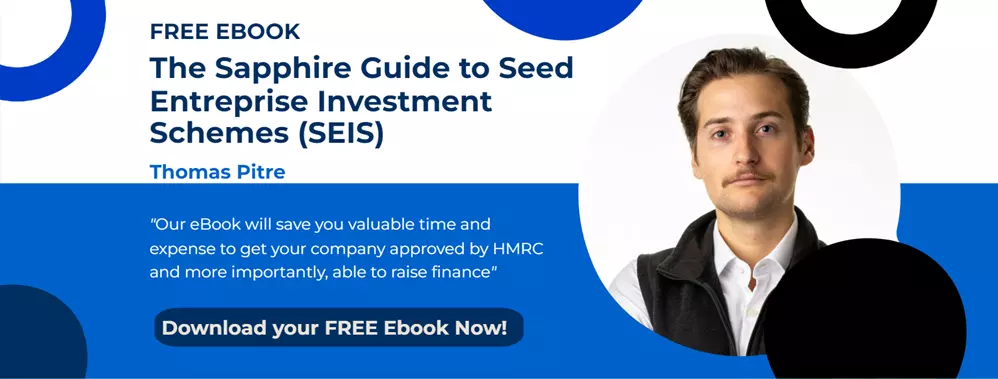
This blog could be the last ever to be written about the 2018 Autumn Statement. I apologise for the delay. My excuse is that it wasn't very exciting from an Enterprise Investment Scheme ("EIS") perspective because there were no further changes to the rules, but rather a series of progress reports. The boring nature of this Budget is an excellent thing as companies and advisers are still trying to grasp the recent changes effected in mid-March 2018.
For a refresh on what these were, refer to my prior blog: Autumn Statement 2017 - SEIS and EIS Implications.
Autumn Statement 2018 had four parts related to the Enterprise Investment Schemes, as summarised below:
1) Impact of the latest changes to the rules
The Chancellor of the Exchequer reported that the last changes to the Enterprise Investment Schemes so far proved successful in expanding support to Knowledge Intensive Companies ("KICs") while preventing and re-directing support from low-risk investment opportunities ("capital preservation"). The Chancellor concluded that the new "Risk to Capital" condition was a successful addition to the rules. As a result, the volume of advance assurance applications decreased by over 15%, enabling improved HMRC responsiveness with 90% of applications being processed within 15 days¹. HMRC continues to clarify the new rules to help with the uncertainty. The SEIS/EIS compliance certificates are also now digitalised, so there is no longer a need to post the SEIS 1 / EIS 1 forms.
2) Progress on the future Knowledge Intensive Fund ("KIF") structure
As announced in last year's Autumn Statement, HM Treasury is also improving the supply of capital to KICs through the development of a Knowledge Intensive Fund structure. Although currently in progress, the recent Consultation Response outlined the initial parameters, which is to be a straightforward fund structure, with no new tax incentives or dividend tax relief, but with more flexibility for fund managers and more certainty as to when tax relief can be claimed by investors. The new HMRC approved fund structure is expected to be rolled out in April 2020².
3) Addressing EU State Aid concerns
The Enterprise Investment Schemes follow EU State Aid rules which are in effect currently until the UK exits the European Union, expected in March 2019. In his speech, the Chancellor made a point to address that any EU lending may then be matched / replaced by UK funds. The EIS Knowledge Intensive Fund Consultation Response stated that the structure of the Knowledge Intensive Fund is conditional on where we land regarding EU State Aid and Brexit. So keep calm and carry on working within the EU State Aid framework (minding potential abrupt foreign exchange swings), but watch the space closely as we near March 2019 when there will be changes associated with Brexit.
4) Enabling pension funds to be invested in patient capital
To improve capital flow for support to small to medium enterprises in their growth phase and later stage venture capital, HM Treasury is working on enabling Defined Contribution pension schemes to be allowed to invest into patient capital (which includes Enterprise Investment Scheme companies and funds). Work is underway within the Competition and Markets Authority regulations, with a focus to ensure alignment of advisors to capital, prevent herding, focus on costs over returns and support (perhaps give preference to) Environment, Social, Government ("ESG") investment opportunities³.
Although the recent Autumn Statement didn't carry the drama of the prior year, this is welcomed by all. I found the progress reports grounding; a signal that the government is determined on delivering what it sets out to do. We know what the purpose of the Enterprise Investment Schemes are, and we have the objectives for the future outlined. The primary challenge ahead is Brexit, which will show just how flexible and resilient the country is.
Footnotes:
1) Financing Growth in Innovative Firms: One Year On - HM Treasury. October 2018
2) Financing Growth in Innovative Firms: EIS Knowledge Intensive Fund Consultation Response - HM Treasury. October 2018
3) Financing Growth in Innovative Firms: One Year On - HM Treasury. October 2018
Written by Vasiliki Carson
As a partner at Sapphire Capital Partners LLP, Vasiliki specialises in SEIS and EIS advance assurance applications, R&D tax credit claims, preparing investor documentation and financial models for cliets. Prior to co-founding Sapphire Capital, Vasiliki was with PwC and Goldman Sachs in Tokyo and New York. Contact her by email at vasiliki@sapphirecapitalpartners.co.uk or view Vasiliki's full profile here.


.gif)

